Birdwatching: Ten rare birds you might spot in the UK this winter - and where you can find them
This article contains affiliate links. We may earn a small commission on items purchased through this article, but that does not affect our editorial judgement.
and live on Freeview channel 276
We might not think of the United Kingdom as a warm wintertime destination, but for many birds from more frigid parts of Europe it's the ideal getaway.
Migratory birds, including some rarer visitors, appear to be flocking to the UK in higher numbers than usual this year, in their annual search for food during the cold season. Some avid birdwatchers even suspect we're in the midst of an irruption - where birds arrive en masse after food sources fail in their native lands. The UK, meanwhile, has had a potentially record-breaking bumper crop of winter food sources like hawthorn berries, in what the Woodland Trust describes as great news for wildlife.
Advertisement
Hide AdAdvertisement
Hide AdWinter can also be the perfect time to spot some of the more elusive local species - as European migrants join the local population for the winter and boost their numbers. Some species even move around the UK in search of more food and milder climes during the cold months, giving people a better chance to see them.
Here are some of the less common visitors you might spot in the UK this winter. Perhaps, if you're very lucky, in your own garden:
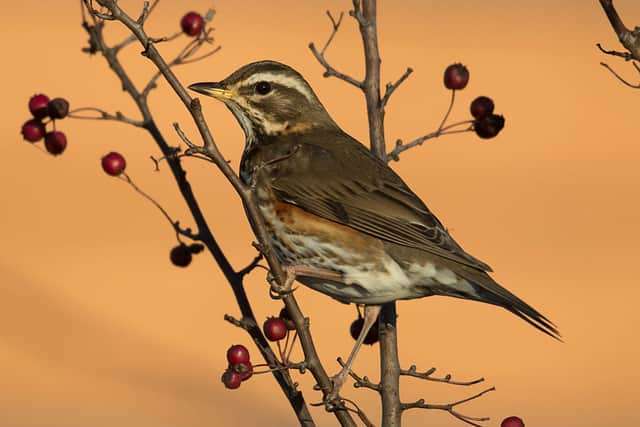

10. Redwing (and other thrushes)
Redwings, native to Iceland, the Faroe Islands, and Scandinavia, migrate to the UK during wintertime in large flocks. Known for their speckled breast and belly and the ruddy red plumage hidden beneath their wings, these are the smallest thrushes found in the UK.
But redwings are far from the only thrushes you can find in the UK during wintertime. Fieldfares are also a popular visitor to try and spot, while other year-round residents like song and mistle thrushes tend to become slightly more common. Occasionally, an ever rarer bird will appear. Hundreds of birdwatchers recently flocked to an Essex garden after a northern waterthrush was spotted - only the eighth time one has ever been recorded in the UK.
Advertisement
Hide AdAdvertisement
Hide AdThe best thing to do if you'd like to see redwings or fieldfares for yourself is look for their favourite food sources - berry trees like hawthorn, rowan, or holly. While they typically prefer open, rural ground, particularly cold weather will often drive them into urban parks and gardens - sometimes both species will even flock together. So if you're a townie, a cold snap is the best time to try and see them.
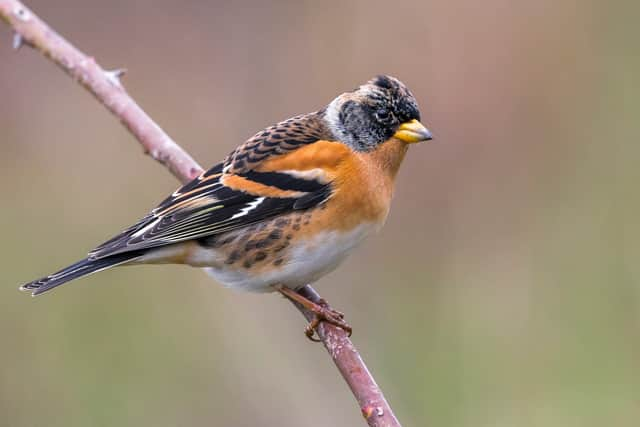

9. Brambling
The tiny brambling is another winter migrant, which the Woodland Trust says also flies to the UK to avoid the harsh midwinter conditions of Scandinavia and Russia. They are only around from September to April.
Their winter plumage is almost like song thrushes in miniature, and males and females typically look a little different from one another - with many males still bearing a hint of their warm orange robin-like chest from the breeding season. Spotting bramblings could mean you're in for a twofer - as they frequently flock together with chaffinches.
The best place to see a brambling is your local wood, especially around beech trees - the seeds are their favourite food. They can also occasionally be spotted roadside, the Trust says, eating seeds pre-crushed by passing cars.
Advertisement
Hide AdAdvertisement
Hide Ad8. Blackcap
An attractive warbler known for its distinctive little 'hat' - black for the grey-toned males and rust-coloured for the brown females - the blackcap used to be primarily a summer visitor from Germany, according to the RSPB.
But more and more of these 'northern nightingales' now overwinter in the UK, and best of all, aren't afraid to visit urban and suburban areas when the colder months leave them hungry. Blackcaps enjoy both insects and berries, and a great way to see them in winter is to keep a well-stocked bird feeder in your garden.
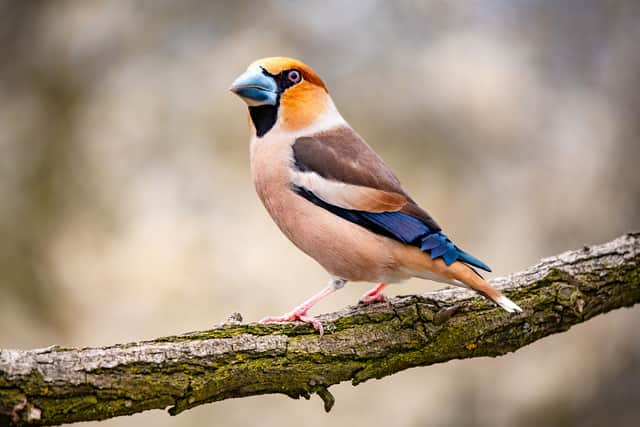

7. Hawfinch
The striking hawfinch is the UK's largest finch species, but also one of its hardest to find. Unfortunately, it has been added to the country's conservation red-list, and the Wildlife Trusts warn there may be less than a thousand breeding pairs left.
Some of their last remaining strongholds include the Forest of Dean, New Forest, Breckland in East Anglia, and North Wales' Conwy Valley. They can be difficult to find - or even hear - during the summer, but winter is the best time to try and see them as more arrive from Europe - and they can turn up on local hornbeams and yew trees in unexpected places.
Advertisement
Hide AdAdvertisement
Hide Ad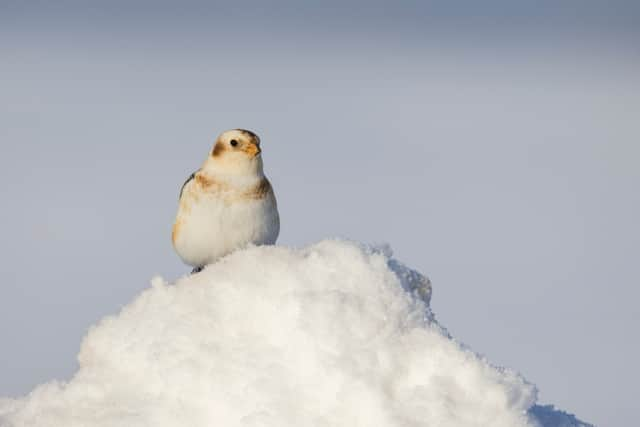

6. Snow Bunting
While a few breed in Scotland, most of the UK's snow buntings - named for the male's 'snowy' white breeding season plumage - breed across the Arctic, from Scandinavia to Alaska. The RSPB says they develop some sandy-coloured feathers during the winter, when many flock to the UK for its comparatively warmer climes.
In winter, they can most easily be found around the coast in northern and eastern regions, but will occasionally venture further inland - particularly to heathland habitats.
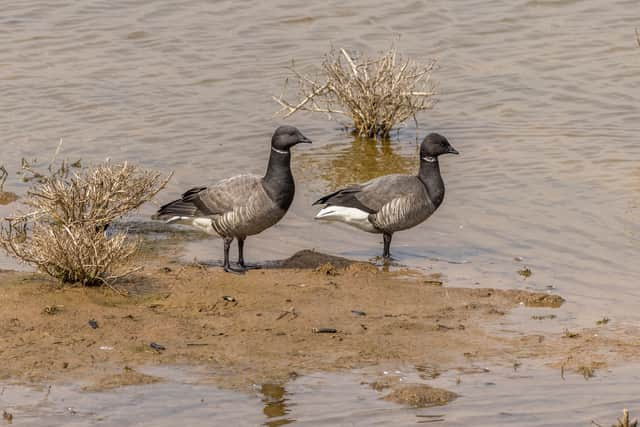

5. Brent Goose
It's not just song and garden birds that can be found in the UK during winter. The tiny, dark-coloured brent goose, similar in size to a mallard duck, enjoy spending their winters on Britain and Ireland's coastal saltmarshes.
Nearly 100,000 will arrive from their Siberian breeding grounds each year, making them pretty easy to find if you're near the coast at all. However, a particularly large flock gather in Norfolk's Cley Marshes wildlife reserve every year, which can usually be found grazing on Eye Field.
Advertisement
Hide AdAdvertisement
Hide Ad4. Golden Plover
Golden plover live in the UK year round, hidden away in the uplands where they breed. But in the winter, they flock to lowland farms and wetlands in their thousands - joined by many more of their Scandinavian cousins.
Known for their 'mournful' cry and mottled gold backs and wings, the British Ornithological Society says the highest numbers can be seen in the Humber Estuary, throughout East Anglia, and the Somerset Levels - although it's worth checking out your local wetland reserve too.
3. Pintail Duck
Some birders call the cold season 'weird duck winter', and for good reason. At this time of year, many migratory waterfowl species arrive from the continent - while even local duck populations may move around the UK a bit.
The pintail duck, which cuts an elegant silhouette in black and white with its long, pointed tailfeathers - is one of them. This species rarely if ever breed in the UK, but throughout winter it will join other ducks in sheltered estuaries to dabble for food. Particularly large groups are known to gather at The Wash in East Anglia and the Dee Estuary on the North Wales/England border - which can be the most reliable place to see them if you want to make the trip.
Advertisement
Hide AdAdvertisement
Hide Ad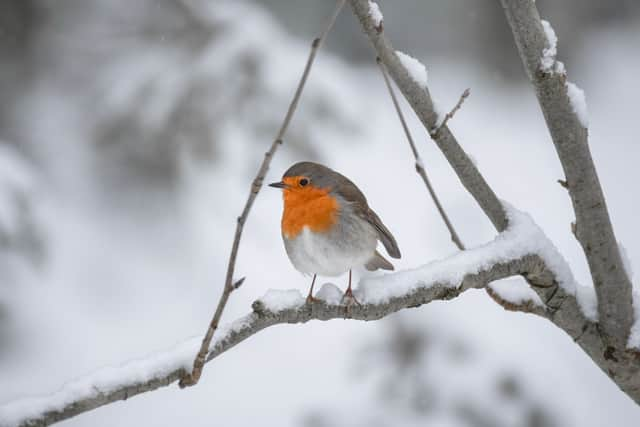

2. Robin
Red-breasted robins, with their inquisitive natures and bold songs, are already a year-round garden favourite in much of the UK. But they've become a Christmastime icon for a reason.
During winter they become much more common, as their numbers are bolstered by visiting robins from Russia, Scandinavia, and colder parts of Europe - where food sources are thin on the ground this time of year. Your very own garden can be a great place to spot robins, especially if you lay out some food to help them make it through the icy season.
Some of the best foods for robins are fatty foods like suet pellets, dried fruit, mealworms (these are especially beneficial because robins are insectivores), special high-protein robin blends, peanuts (shredded or crushed), meaty kitchen scraps, mild cheese, and cake or biscuit crumbs.
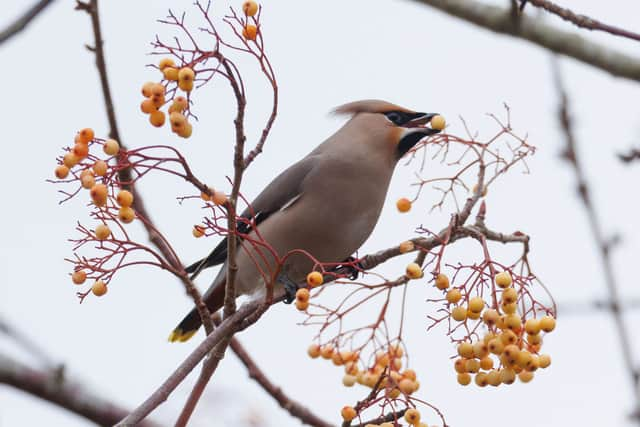

1. Waxwing
The holy grail of most hobbyist's year lists, winter 2023/24 has proven to be an incredible time for people hoping to catch a glimpse of these elusive Scandinavian visitors.
Advertisement
Hide AdAdvertisement
Hide AdWith their pointed head crests, jet black eye masks, and tiny splashes of vivid yellow, waxwings are a rare and treasured sight in the UK, but only for the winter months. They tend to travel in small flocks, but where they appear can be somewhat erratic.
If you'd like to see waxwings for yourself, the best thing you can do is check recent sightings on local birdwatching apps, websites, or social media accounts (like this Twitter account for example). Flocks will often visit the same hawthorn, rowan or cotoneaster trees for several days in a row to feast on their berries.
Comment Guidelines
National World encourages reader discussion on our stories. User feedback, insights and back-and-forth exchanges add a rich layer of context to reporting. Please review our Community Guidelines before commenting.
